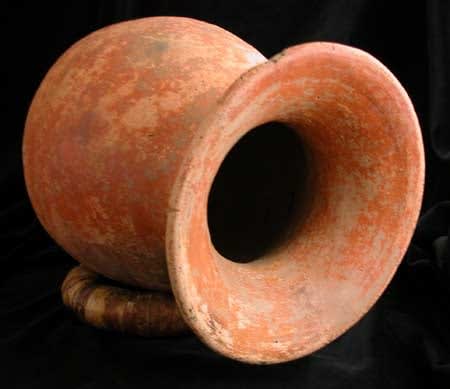Djenne Terracotta Vessel, 12th Century CE - 14th Century CE
Terracotta
14
PF.6239
Further images
This beautiful ceramic vessel was created by a skillful artisan in the modern-day Republic of Mali. At the time of its creation the Empire of West African Mali was at...
This beautiful ceramic vessel was created by a skillful artisan in the modern-day Republic of Mali. At the time of its creation the Empire of West African Mali was at its zenith. The famous chronicler Ibn Battuta, a Berber theologian from Tangier who spent a year in Mali, writes that he was overcome with amazement by the exorbitant wealth of the Mansa Musa court of Mali, whose grandeur at the time was equal only to that of the Mongol Empire. Jenne-jeno, one of the prospering cities at the time, also reaped the bounty of the rivers Niger and Bani, as it was strategically located at the confluence of these two waterways. An accessible and plentiful gift of the rivers was the ceramic grit, a material that was worked by local artisans in a skillful and sensitive fashion. The result of these efforts was the creation of terracotta pottery that is truly distinguished in the world of ceramic art. Here, we see a striking example of Djenne artistry in this handsome vase. With its bulging body, short neck, and wide flaring mouth we find a vase whose fine proportions truly please the eye. Our tactile senses are also stimulated by the feel of the vessel's smooth, highly burnished reddish-brown surface. The lower half of the body and the neck have also been textured with a series of diagonal lines that appear as if the work was rolled upon a reed mat while still wet. Truly a sensory delight, this lovely vase connects us in a most spirited manner with an African empire whose wealth and splendor at one time were as legendary as we are beginning to discern.











